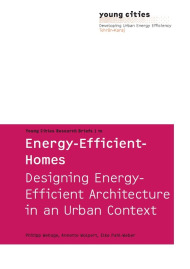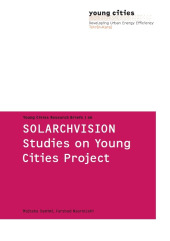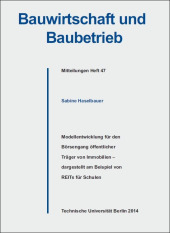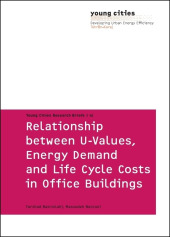Energy-Efficient-Homes
Designing energy-efficient architecture in an urban context

Format: 14,8 x 21,0 cm
Publishing year: 2013
The concept for the Energy- Efficient- Homes is part of a holistic approach to develop urban structures with energy-saving features, high quality, low carbon emissions and affordable costs for middle and lower income classes. The process of developing this concept includes a design for energy-efficient housing in an Iranian new town project with potential for mitigation in the region and climate adaptation. The method of developing a spatial concept according to the energy-relevant aspects of urban and architectural morphology and integrating it into the socio-cultural context of the “Shahre Javan Community”, the pilot settlement in Hashtgerd New Town, is designed to provide an economic strategy for a practical basic energy standard that has been adapted to the region. The courtyard housing scheme of the Energy- Efficient- Homes shows a new development derived from the vernacular approach of spatial hierarchy considering the major morphological aspects of orientation and compactness. With the use of new technologies for energy efficiency, this basic standard of spatial organisation and design can also be upgraded to meet higher standards. The chosen research methodology for the Energy-Efficient-Homes is performed for a residential pilot project in the “Shahre Javan Community”. To ensure the appropriateness to the pilot project, the methods of research are integrated in a planning process. The method suitable for combining scientific and planning results is the research-by-design process. In a systematic work process, the findings of a general approach and specific design allow for the evaluation and definition of further steps. By applying this scenario-specific methodology for architectural and urban design supposition, that have been obtained from a general approach, to real planning situations, the assessment can be performed on different scales. Finally, the results gathered in the design process are used to revise the formulation of the initial approach. The findings of the design and research process for the Energy-Efficient-Homes are transferred to a final design proposal for an urban unit in the pilot area. By transforming the design and adaptation measures from the typological approach into a specific design scenario, the challenges for the practical application of such a general approach can be weighted and evaluated. Furthermore, the realistic scenario serves as a basis for cost estimations, energy simulations and constructional detailing. Architectural models and drawings are used to define a standard for materials and energy objectives. The definition of adaptive design measures out of the research and planning process and the identification of urban, architectural and technical elements for developing the Energy-Efficient-Homes led to a distinction between a Basic Principle and possible Upgrades. This categorisation helps to define different standards as well as a scientific basis for the planning process of energy-efficient housing in the region. The Basic Principle is the design strategy for energy-efficient architecture and urban design from a spatial approach without any additional technical demands. It contains all planning and design measures to increase energy efficiency through the spatial configuration, such as building orientation and compactness, site suitability and cultural context. It can be seen as a low-cost approach and defines a minimum standard for energy efficiency in the Middle East. The upgrading measures include possibilities to raise the standard of the basic principle. Supplementary technologies can be integrated into the spatial approach. Possible Upgrades include simple mechanical elements for light and energy guidance, such as sun-shutters, furthermore the use of the ground temperature by means of earth tubes and a concept of heat exchangers, and finally the application of higher technological materials, such as photovoltaic fabrics to generate supplementary energy. The measures are characterized by a planning dimension as well as a technological and economic dimension. The choice of upgrading measure is dependent on the economic and technological context. The upgrade defines the standard for maximum energy efficiency in the region.



